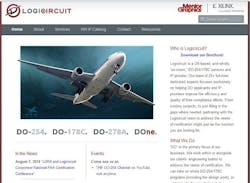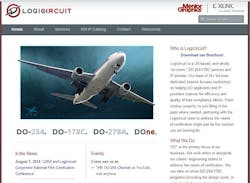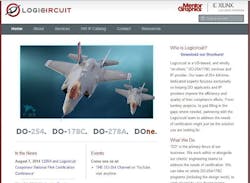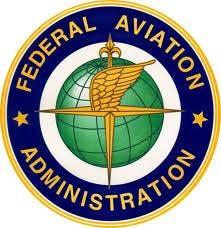Leverage COTS IP to speed development, comply with requirements, and mitigate SEE, urges Logicircuit’s Lange
- NAME: Michelle Lange
- TITLE: Director of Sales and Marketing
- CO.: Logicircuit Inc.
- ROLE: DO-254/178C services and IP provider
- CONTACT: www.logicircuit.com
An avionics regulations and certification expert from Logicircuit describes the upcoming FAA National Systems, Software and Airborne Electronic Hardware conference and its value, commercial off-the-shelf IP, and the path to certification.
Please describe the FAA event, including how it’s unique, why it is important, who attends and the value they derive from attending.
The FAA National Systems, Software and Airborne Electronic Hardware conference is unique in that it brings together government policy makers, auditors and subject-matter experts, applicants (those having to comply with the policy), and other industry experts and contributors, such as Logicircuit for a common platform of understanding.
This event is important because safety is paramount to the flying public and it takes all these parties working in concert to ensure safety. More specifically, the event is important because both the technology and policy are constantly in motion, evolving as technology rapidly evolves and new issues of concern are discovered.
This event provides a discussion forum for the latest changes in terms of both technology and the policy to address it. This year’s event is highly anticipated because each aspect of the conference – systems, software, and hardware – has seen so many changes over the past few years. Attendees include government employees from the FAA, certification specialists from OEMs such as Boeing and Cessna, tier 1 and 2 systems suppliers, and other industry suppliers, such as tool vendors, and product/service providers such as Logicircuit.
Why are aerospace events, such as this and other high-tech conferences, so valuable – especially now?
As you know, technology is advancing quite rapidly. And for the sake of safety, very strict development assurance is needed. Just because technology is available doesn’t mean that it necessarily is safe to use. So there is this balance of leveraging new technologies for productivity and reduced size, weight, and power (SWaP), and understanding which technologies can be used safely, how to develop with the assurance to use new technologies safely, and which technologies/tools/products may actually enhance safety. This is the type of forum that really focuses on these important issues – the blending of technology and appropriate regulation.
What changes are on the horizon and/or happening now with which engineers and executives need to keep pace?
Each of the three domains has seen significant change in the last few years, and it’s been a few years since we’ve had one of these events. So it’s quite timely.
On the Systems side, ARP 4754A was released and invoked in the past two years and its companion on the safety side, ARP 4761A, is nearing finalization. Systems, as you know, are made up of software, hardware, and mechanical items.
On the software side, DO-178C was invoked as policy just about a year ago. It brings substantial changes in several key areas, such as model-based development, formal methods, and tool qualification.
On the hardware side, while DO-254 (the document) itself has remained stable, the interpretation of compliance has been changing fairly rapidly to address various areas of technology, such as commercial off-the-shelf (COTS), COTS IP, board-level development, and Single Event Effects (SEE). SEE is a topic that must be understood and addressed at the microelectronic level, but which affects systems and is a vital new factor in safety calculations, so it really ties together several distinct disciplines.
What role does software play in these changes?
As mentioned earlier, DO-178C is a newly invoked, fourth incarnation of DO-178, the standard for developing airborne software. As software technologies (and the underlying hardware on which software executes) and development methods have grown more sophisticated, so has the need to understand and regulate development approaches for safety critical systems.
The FAA approached industry to sponsor this event. Do you foresee the FAA going the way of NASA, and collaborating and partnering more with commercial vendors to gain access to commercial resources, help with budgets/funds, etc.?
I cannot speculate on the budget aspects, but I do know that the FAA understands that industry cooperation and participation is vital to the regulatory efforts. Sponsorships from industry provide not only some budget assistance, but also that vital link and visibility to the companies trying to support the regulatory standards in a variety of ways.
What value does government and industry collaboration bring?
Industry educates government on what sort of technologies and development methods are possible. Government then decides if/how these technologies and methods can be used to develop safe aircraft systems. One needs the other for the benefit of aircraft efficiency and safety.
Why have you opted to sponsor the event?
We were very lucky to be given an introduction to the possibility of sponsoring the event, and we recognized that doing so would be a great way to introduce ourselves and our offering to the greater industry. We are just a small company, but we believe we have a very important offering to the industry at a time when the policy is clarifying the need for solutions.
Specifically, we offer a catalog of DO-254 DAL A compliant IP. Roughly four years ago, Logicircuit recognized (through our own consulting business) the trends of IP use and the difficulties in being able to use IP given the strict development assurance required with DO-254 compliance. So we set out to develop a solution.
We think the business model we have created and the process we are following will provide the industry with a win-win-win solution to the COTS IP challenge. Our clients win with compliant solutions at a lower price than doing the compliance and/or design work themselves. The regulatory agencies (e.g., FAA, EASA…) win because they get the highest level of design assurance for these critical elements of the electronics designs. We win in that we have to go through the effort of DO-254 compliance once per IP and over time can profit as we sell that solution to numerous companies.
What can attendees expect/look forward to from your firm at the event?
Attendees will hear about the issues of concern with COTS IP from the FAA directly, as the policy has been evolving in this area and the FAA seeks to clarify this at this year’s conference. They will then be introduced to an industry solution for using COTS IP, namely ours. We also provide IP solutions that assist in the critical area of mitigating SEE. So we will be giving presentations in both these areas.
Do you have any advice/guidance related to regulations/requirements/policies that should be implemented today and/or into the foreseeable future?
Our only real advice is to weigh the options of using IP, and to understand that there will be compliance requirements.
We’ve seen that most companies go one of two ways. Some companies decree that IP use is banned. So instead of leveraging expertise from industry and using commercial IP, they design everything in-house (because they don’t know how to address the certification issues). Then there are those who use IP in their designs and either simply hope it will go unnoticed or just don’t consider the certification requirements until so late in the process that it poses significant challenges to the project as a whole.
These seem to have been the predominant approaches over the past few years. I think the visibility of the policy, as it has evolved to this point, along with potential solutions at this year’s conference will open people’s eyes as to the possibilities.
| About Michelle Lange Before joining Logicircuit as Director of Marketing and Sales in May 2013, Michelle Lange spent the past 23 years in electronic design automation for ASIC, FPGA, PCB, and systems in a variety of roles from technical communications to marketing and sales. Most recently, she spent six years driving the DO-254 program at Mentor Graphics. Michelle is currently a member of the DO-254 Users Group and has been involved in the SAE S-18 committee working on system level certification guidance, leading the working group on “Tool Assessment for System Development.” |






